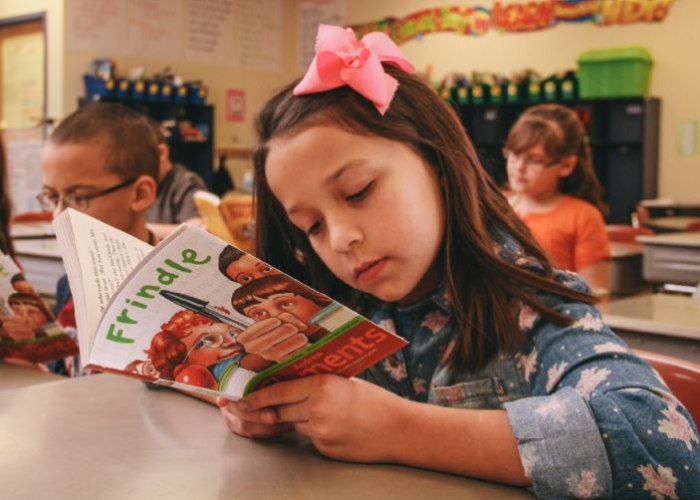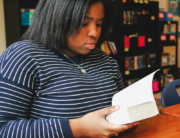Do you remember when you were a kid, and every phase of your life seemed to last forever? You couldn’t imagine that your current situation would ever come to an end. This can be wonderful if it’s summer vacation, but can be a real trial for a struggling reader.

Many of our students who have reading difficulties think that they will have them till the end of time. Whatever reading “level” they have currently mastered will be their level when they finish high school. This can be very discouraging for children, particularly when their friends are able to read Percy Jackson or Harry Potter. There are times when our obsession with book levels and reading levels create huge barriers for our readers. If we aren’t careful, children can see them as a box they will never escape. Worse still, there are times when the box they are placed in really is too small or too big. Leveling books is not an exact science, often the level does not fit the reader, even if our assessments say it should.
Just Like Shoe Size, Book Level Will Grow
 This is where the shoe analogy can be really helpful. Gail Boushey and Joan Moser have a lesson dedicated to it in The Daily Five, where they talk about how different shoes can be used for different purposes, and how important it is that the shoes fit the wearer and the purpose. I don’t usually go through this whole lesson, but I do use the analogy to de-emphasize book levels, and highlight the importance of how a book fits. When I am allowing my students to choose books for themselves, particularly at the library, I don’t have them look too closely at the book level, even though our library gives the AR level on the spine and most of my kids know what level they “are.” I tell them that levels are just like shoe sizes. I can’t just pull a size 7 (well, 7 ½ these days) off the rack and expect it to fit. I have to try the shoe on. I ask my students to do the same as they are choosing something to read: look at the size of the print, read the back blurb, read the first page or two to make sure.
This is where the shoe analogy can be really helpful. Gail Boushey and Joan Moser have a lesson dedicated to it in The Daily Five, where they talk about how different shoes can be used for different purposes, and how important it is that the shoes fit the wearer and the purpose. I don’t usually go through this whole lesson, but I do use the analogy to de-emphasize book levels, and highlight the importance of how a book fits. When I am allowing my students to choose books for themselves, particularly at the library, I don’t have them look too closely at the book level, even though our library gives the AR level on the spine and most of my kids know what level they “are.” I tell them that levels are just like shoe sizes. I can’t just pull a size 7 (well, 7 ½ these days) off the rack and expect it to fit. I have to try the shoe on. I ask my students to do the same as they are choosing something to read: look at the size of the print, read the back blurb, read the first page or two to make sure.
I also use this analogy to remind them that, just like their shoe size, their book level will GROW. What didn’t fit them two months ago is worth trying on again. When they do pull out something I suspect will be at their frustration level, I have them read a page because there have been times when I have been surprised. If the book really won’t work, I tell them “that won’t fit you yet,” emphasizing that it WILL be a good fit for them someday. I ask them if the shoes they wore last year still fit, or if the shoes they will wear two years from now will stay on their feet today. I try to remind them that they are growing as readers every day. I make it a point to show them books that are now “too easy” but at one time were “just right.”
I was even able to use this analogy with a student who was teased because his reading “level” was lower than another student’s. I asked him who wore bigger shoes, her or him. He said he did and I asked him “does that mean your feet are better than hers?” He giggled and said no, but it seemed to make him feel better. It reminded him that learning to read is just as individual and developmental as the size of your feet.
What Makes a “Just Right” Book?
Days fly by at mind-boggling pace for people in our profession, and our students seem to grow and change every minute. But for a child, time moves so slowly as to be excruciating, particularly when that child is struggling. If we want our kiddos to persevere in the face of obstacles, we have to remind them that these obstacles are temporary.
When it comes to reading “levels,” we have to teach our children to think past the level and look carefully at the text in front of them. They need to know that what was out of reach a month ago might fit perfectly this week, and that a level is just a number, not an absolute.
Rather than rely on a leveling system, we want them to be able to determine for themselves if this is the “just right” book for them at this moment in time, or if they should set it aside for a little later. The only way to know that is to try the book on for size and see how it feels.








Leave A Comment